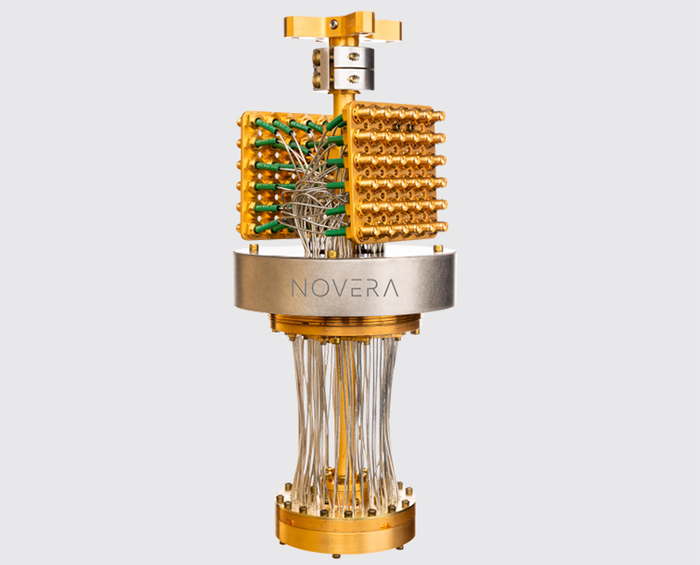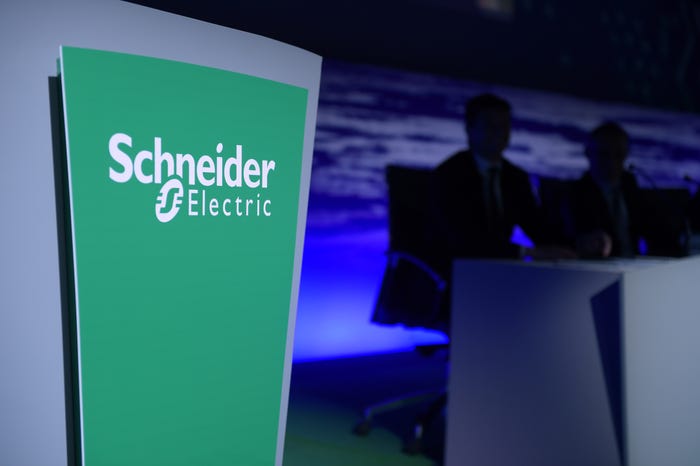Industrial IoT platforms don’t guarantee success, and digital transformation can be as difficult as it is vague. But ignoring digital is also not an option.
July 18, 2019

The dirty little secret about digital transformation initiatives is that many of them fail, as Harvard Business Review has reported. On the other hand, there are a growing number of examples of digitally minded firms, from Airbnb to Amazon to Netflix and Uber, that have launched platforms that have redefined entire markets.
It’s no wonder the market is awash in hundreds of Industrial IoT platforms that promise to help manufacturers, utility companies, facilities managers and similar organizations reinvent their business. Amidst that backdrop is the concept of Industry 4.0, and its promise to tap technologies such as IoT, digital twins and machine learning to fuel the next industrial revolution.
Schneider Electric Chief Digital Officer Hervé Coureil has a unique perspective on the topic. Having worked stints as both a chief financial officer and a chief information officer before assuming his current role, Coureil says Schneider is disinterested in building or selling platforms for their own sake. “It’s not so much about the platform. It’s about how you impact the world with digital technology,” he said. “In industry, the magic happens when you leverage the power of platforms, and you apply it using specific subject matter expertise.”
Martin Davis, managing partner for DUNELM Associates Ltd., expressed a similar sentiment, emphasizing the importance of people and processes over technology. Industrial firms’ focus should be on “how you do things and how they can be done differently,” he said. “Yes, technology provides new opportunities, but it’s not about the technology. It’s about how you interact with your customers.” Building on that logic, Davis continued: “Buying a shiny new IoT platform is not a magic bullet.”
For many industrial companies, the focus is more on digital enhancement or enablement than outright transformation, Davis said. While there are examples of manufacturers that have transitioned from selling products to services — one obvious example being jet engine makers selling flight hours of their product instead of selling engines — this is more of an exception than a rule. “A lot [of these initiatives] are about adding digital products and services to an existing business, e.g., digital monitoring of a physical asset,” said Davis, who previously led a digital transformation initiative at the Canadian conglomerate J.D. Irving Ltd.
Schneider Electric’s digital strategy emphasizes solving customer problems rather than offering an all-purpose IoT platform. The company deliberately seeks to avoid being a jack of all trades, master of none. “We are relatively narrow in the type of problems and the number of markets we address,” Coureil said. “We really are centered around energy efficiency — sustainability, basically.” That theme of maximizing efficiency cuts across the vertical industries Schneider serves including the data center, electric power distribution, buildings and industrial processes.
An organization deciding how to harness the power of digital tools must think carefully about resource allocation, which is “an aspect of digital transformation that doesn’t get talked about much,” Coureil said.
Organizations should have a clear decision process as to what to prioritize and invest in, and the ultimate cost of those investments. Schneider Electric’s digital organization, which includes some 3,000 employees internationally, stresses the transparency of its spending. “We are a global cost center. We don’t really charge back anything to other parts of the business because we want to know exactly how much we cost,” Coureil said. That focus makes it simpler to make a judgment call whether a given digital initiative is successful, while also giving it focus. “It means you’re going to do fewer things that are going to probably cost more, so you need to be super sharp to explain how you’re going to prioritize this initiative versus another and what you’re expecting out of it.”
Coureil says one of the challenges with digital transformation initiatives is that, while it is easy to launch a peripheral proof-of-concept project, it’s much more difficult to impact the core of the business. “The hard issue of digital is really how you scale,” he said. “A demo is nice, but how do you run that in 80 countries? How do you scale that to that many plants, how you keep up performance 24×7?”
A challenge related to scale is the tendency for some industrial companies to pursue ambitious projects without a solid strategic underpinning, but some industrial companies are becoming more cautious in deploying digital initiatives. “I think people are starting to be wary of super-intergalactic-sounding projects that involve ripping out things, replacing stuff that works with new stuff that is supposed to work better,” he said. “I think we really see a move toward: ‘Let’s try to build new capabilities without having to replace what works,” Coureil added. “People are asking: How you do complement rather than replace?”
It wasn’t long ago, however, that the pitch from some industrial vendors seemed to recommend ripping and replacing legacy equipment and deploying predictive maintenance whenever possible. Given the conservative nature of most industrial organizations, the former is rare. And research from Bain indicates that predictive maintenance has failed to be as successful as initially expected because “it has been more difficult than anticipated, and it has proven more challenging to extract valuable insights from the data,” according to the report “Beyond Proofs of Concept: Scaling the Industrial IoT.”
“Predictive maintenance is difficult,” Davis acknowledged, “but the pay-off is large.” In the interim, however, many industrial organizations are still focused on preventative maintenance, having not yet progressed to condition-based maintenance. “While doing full predictive maintenance is difficult, working with multiple data points to do more sophisticated forms of CBM can be more achievable,” Davis explained. “There are a lot of opportunities there that companies are not realizing.”
One challenge is simply getting relevant and sufficient data in a single place, Davis said. “Buying and adding a shiny new IoT Platform does not solve all of your problems, it simply creates another island of data. To get results you need all your data in one place,” he explained. “A key candidate for this is your existing historian. The alternative is feeding your existing data sources into your IoT platform to combine with your IoT sensor data.”
Coureil stressed the importance of making sure predictive maintenance initiatives have a solid business rationale. If zero downtime is a priority, then pursuing predictive maintenance is a good idea. “Then it makes sense to have your time series data and run them through a neural net and get a good predictive score of when you think you need to plan,” he said. Such an initiative could make sense in sophisticated process industries with a high cost of downtime. “But if you’re speaking about processes that are more discrete, less critical and the cost of downtime is not that big, you might think: ‘I shut down the factory floor in the evening, so I might as well [take care of it] when the shop floor is closed.’”
“Again, it goes back to resource allocation — your investment decision should be what’s going to bring you the best return,” Coureil added.
About the Author(s)
You May Also Like


.png?width=700&auto=webp&quality=80&disable=upscale)
.png?width=300&auto=webp&quality=80&disable=upscale)


.png?width=300&auto=webp&quality=80&disable=upscale)